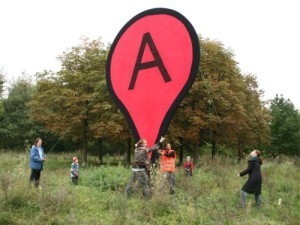Location, Location, Location
 A French novel, from a mainstream author, fell into my hands. Although I had no problems with the vocabulary, the writer started the scenes without providing any idea of the environment where the action took place. To make it worse, he or she did not identify who was speaking. I wasn’t even sure if the character was male or female.
A French novel, from a mainstream author, fell into my hands. Although I had no problems with the vocabulary, the writer started the scenes without providing any idea of the environment where the action took place. To make it worse, he or she did not identify who was speaking. I wasn’t even sure if the character was male or female.
After fighting through several pages, I guessed what was happening and with whom, but I was never sure of the where. I didn’t finish the novel although the write-up on the jacket had intrigued me. I showed the novel to a native French speaker. The same problem surfaced: it wasn’t my French.
That novel’s lack of grounding gave me the idea for this post. I have not yet encountered an Anglophone novel so ungrounded, but I have sometimes had to puzzle out details that a simple sentence would have shown them without making me work hard to figure out where I was or with whom.
When we read, we create mental images of the characters and locations. Our job as writers is to provide the framework to help the reader form those images. Remember? Show, don’t tell.
New writers are more apt to be guilty of not dealing with story locations.
Now, we are faced to a catch-22: readers need to know when and where the action of a novel takes place, but reject pages of description. There’ a secret, though: select enough information so a reader can “see” what the writer saw, but just enough, please. Location descriptions are like good background music that adds to the ambience but doesn’t drown out the movement of the plot.
How a scene is grounded depends on the story. What are some of the ways?
Use outside environments
These could be a planet, nation, city, town, country, farm, beach or forest. Although it is not necessary to have a real place, the reader must feel the place is real. Whenever possible, the details that ground the work should help with plot or character development rather than be thrown in for no reasons. Those are the pages that are skipped by readers.
A comment that a character saw the Eiffel Tower is a dead give away of a location, but not subtle. Something more subtle would be to put the characters into a taxi and have them notice that it was the first Parisian taxi driver that ever drove slowly. The simplest would be to say Paris, France at the top of the chapter. Yet at the same time, the richness of that city calls out for a few details that add to the story. But remember these last words: they need to add to the story. Also details should answer one crucial question: “So what?”
Comments about trucks parked in front of a diner ground a story in a different location than valet parking by a restaurant located on the ground floor of a skyscraper, and prepares the reader’s imagination to different kinds of scenes.
In writing about a location, it is easy to be trapped by clichés such as the Eiffel Tower before. By interweaving the scene into other details, writers can escape that particular danger. For example: beaches with white sands and gentle waves have been described to death, but if the small grains of sand get inside a character’s sandals and irritate his/her feet then we know the person is on or near a beach. If the character wears sandals because the sand was so hot, the writer has grounded the scene with temperature, too.
Smells can be used to create the environment for a scene: the smell of gasoline, pine trees, mud, baking chocolate brownies all create a mood that narrows down place.
Using inside environments
The types of rooms that writers select are another way of grounding. A kitchen large enough for family conferences and games is different from a state-of-the-art kitchen with expensive copper pans that are never used. And shows about the owner character, too. A meal at McDonald’s is different from a meal in an expensive restaurant.
Unlike the Victorian writers who described every piece of furniture, a few details not only ground the reader but tell them about the occupants. Modern sleek furnishings with huge windows overlooking the Hudson River is different from a Cornwall cottage filled with furniture gathered from Aunt This or Uncle That. Trophies from a kid’s football team in the middle of mantle reveal something about the parents’ pride than trophies being tucked away in a closet.
And don’t forget to make it clear when locations are changed. Nothing is worse for a reader to think they are in a city apartment to realize three pages later they are on a farm. Remember: Location, Location, Location.
The post Location, Location, Location appeared first on § Author Massimo Marino.



